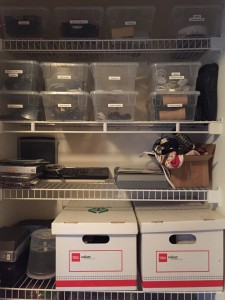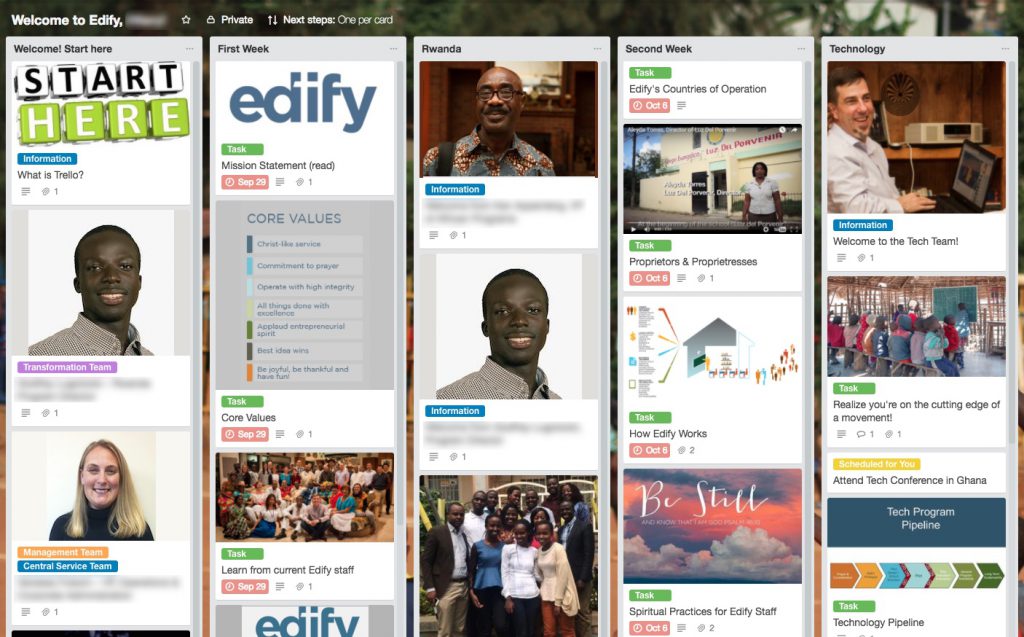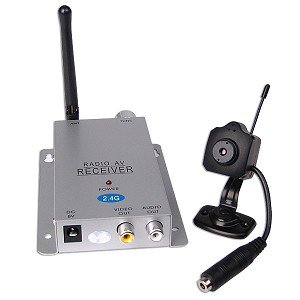Since I have time on my hands, I have been enjoying working on a handful of projects to scratch various ‘itches.’ Some have been long-standing items on my to-do list and others are areas of interest that would normally be relegated to the “someday/maybe” list.
A geek’s closet
All my various tech do-dads and thingamabobs have been in drawers in the den or elsewhere and were reasonably organized but still a hassle to access and dig through. My wife ran across an interesting picture on Pinterest and showed it to me asking if I’d like to do the same with our hallway closet. Needless to say, I jumped at the chance. It also allowed an opportunity to work with my son on installing the shelving.

There’s some more work still to go into it before I’m done. The two cardboard boxes need to be replaced with something better and I’m going to install some LED strips on the inside of the door frame for better lighting.
Amazon cloud
I’ve worked with Amazon’s web services (AWS) both professionally and personally but only to a limited degree. For PlayStation, I generated various financial reports based on usage and personally I’m using their email service to handle outbound email from my mail server.
To address the task that follows and to satisfy my own curiosity, I spun up an instance in their Elastic Compute Cloud (EC2). EC2 is very often what is being referred to when someone uses the overly-used “cloud” term. It’s just a virtual machine that is running somewhere in one of Amazon’s datacenters. Nothing mystical, but quite convenient when you need to set up something like…
A secondary mail server
For various reasons, I really like being in charge of my own services. The web server hosting this very page you’re reading also handles my email. I hardly have much email traffic, but the server is offline from time to time so it’s appropriate to have a secondary mail server available that can receive incoming messages relaying them when the primary server comes back online. With my newly-minted EC2 instance, I was able to get that going in just a short while and checked-off a big to-do item.
Raspberry Pi 2
For father’s day, my family got me a Raspberry Pi 2 to upgrade the previous model I’d been running upstairs (as a secondary DNS server). It kinda amazes me how capable a machine it is for only $35.
Monitoring
The Raspberry Pi 2 is considerably faster than the previous generation. Having some available computing overhead, as well as a slightly-more complicated infrastructure at home (due to the EC2 instance), I wanted to get some monitoring going. I dabbled a little with Nagios, but quickly remembered why I don’t care for it. After researching alternatives, I settled on Zabbix and just got it running this afternoon. It’ll take some time to get everything configured just right, but that’s part of the fun.
bash scripting
Due to a somewhat strange set of events, as I write this I’m making my living on a short-term contract developing some automation scripts in bash (a command-line shell on UNIX/Linux systems). It’s drawing on my older SysAdmin skills and has been really fun made even better by the fact I’m doing most of it from home via VPN. Not too shabby.
I have other projects I want to get into so I may write a follow-up with how those go. Now, back to Zabbix…

 Working for a
Working for a 

 About the same time, I saw online a wireless video camera that was about the size of a matchbook and immediately thought of attaching it to the plane to get a cool POV video while flying. I should note that this was 2004. GoPro didn’t exist yet let alone the whole ‘sports camera’ category. Neither did drones that are so common nowadays. Am I a trend setter? Not really. I just thought it was a fun idea.
About the same time, I saw online a wireless video camera that was about the size of a matchbook and immediately thought of attaching it to the plane to get a cool POV video while flying. I should note that this was 2004. GoPro didn’t exist yet let alone the whole ‘sports camera’ category. Neither did drones that are so common nowadays. Am I a trend setter? Not really. I just thought it was a fun idea.
